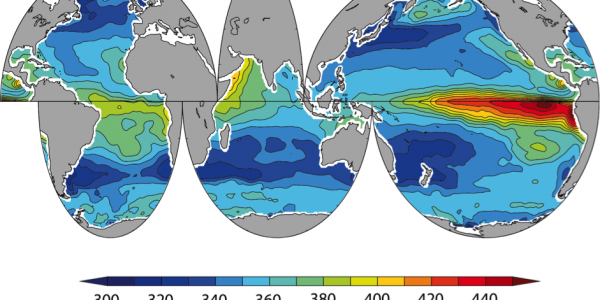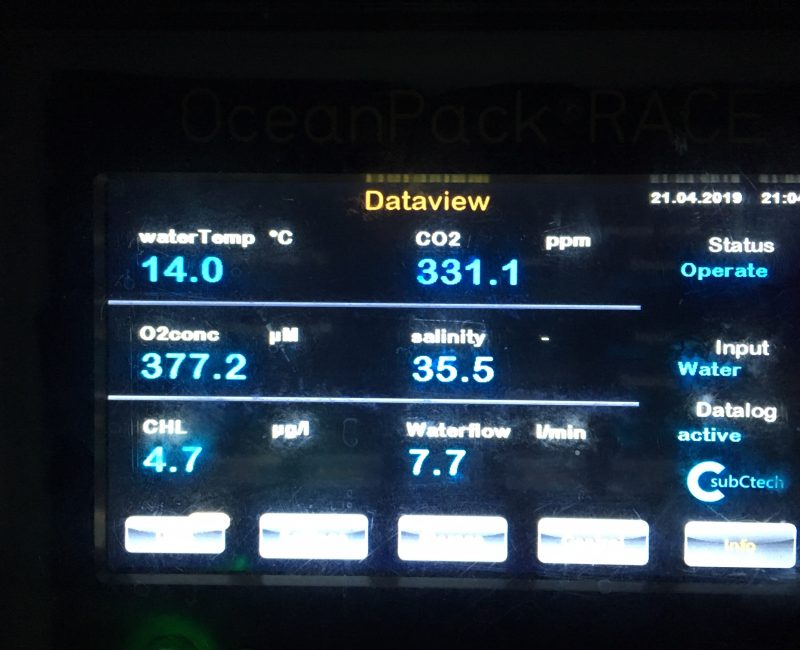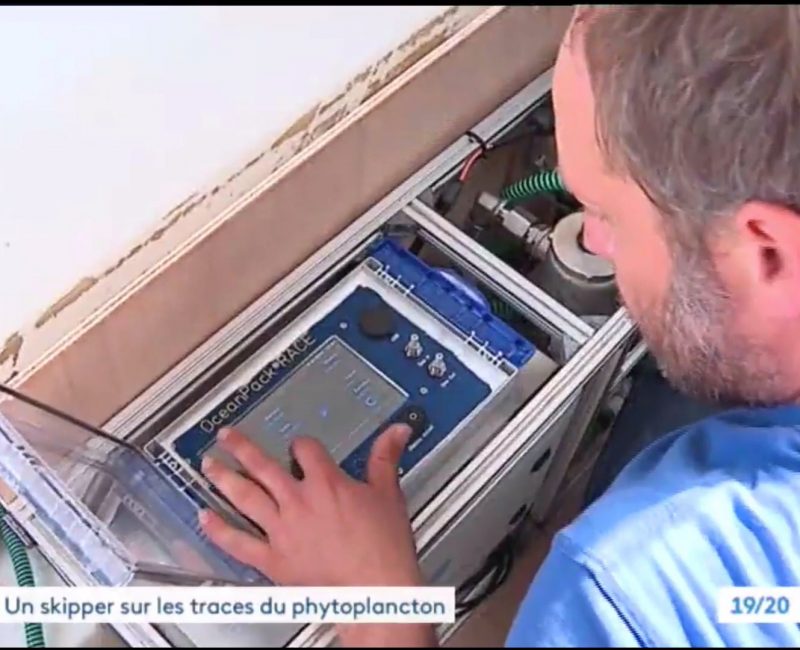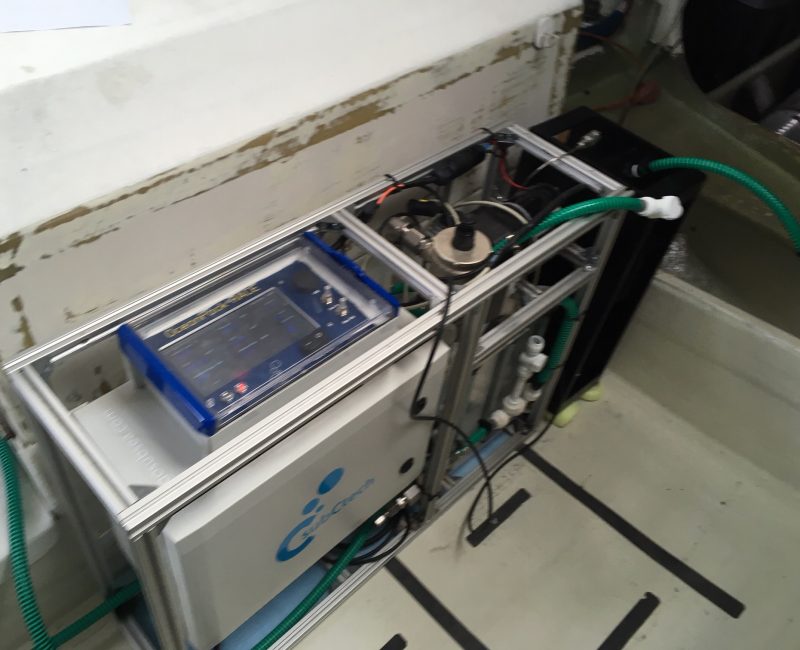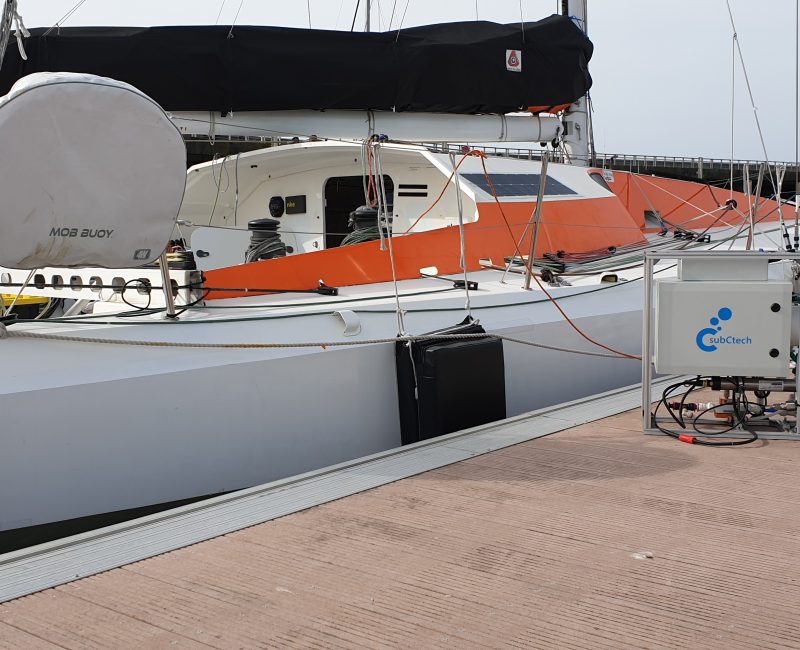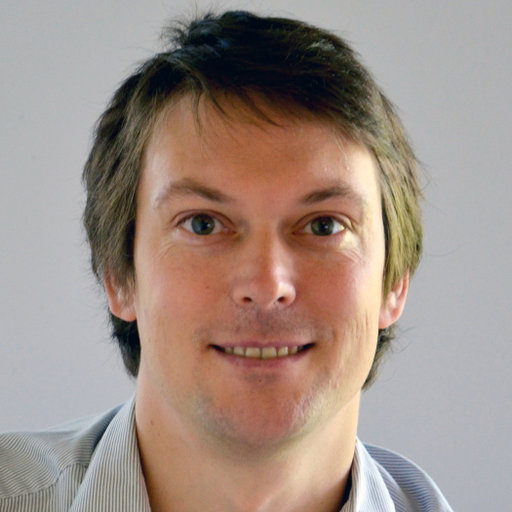
Iodysséus - Could you briefly introduce yourself and the Max Planck Institute ?
Peter Landschützer – My name is Peter Landschützer and I am a group leader at the Max Planck Institute for Meteorology in the Department of The Ocean in the Earth System.
The focus of my group is on observations, analysis and data synthesis.
More specifically, my background is in oceanic carbon dioxide and measuring carbon uptake from the atmosphere.
Iodysséus - What physical parameters are you using ?
Peter Landschützer – My research is related to carbon dioxide (CO2) exchanges between the ocean and the atmosphere. I am interested in oceanic surface water observations taken by different vessels (ships of opportunity, sailing boats like Iodysséus, research boats, and more).
The crucial parameter is the partial pressure of CO2 (pCO2) because the air-sea exchanges are directly proportional to the difference between the partial pressures of those two environments.
The atmosphere is somewhat easier to study than the ocean because atmospheric CO2 is fairly homogeneously distributed. The ocean, however, is not homogeneous; rather, it is separated into different zones with varying biogeochemical characteristics due to currents, differing biotopes, and other factors.
Knowing the partial pressure of CO2 is an exercise with real-world consequences; this information allows us to extrapolate CO2 fluxes from the air to the ocean, corresponding to the quantity of CO2 absorbed by the ocean.
Iodysséus - Which biological parameters are used ?
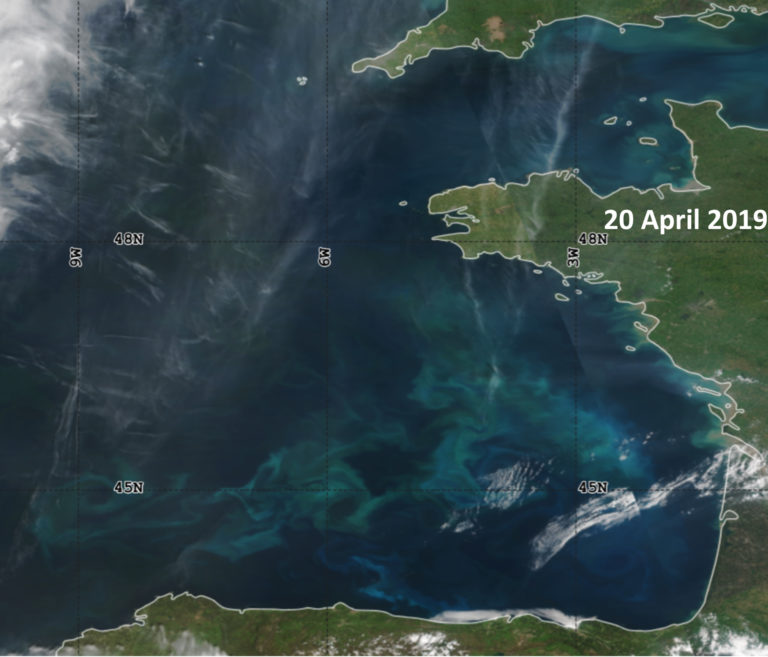
satellite view
Peter Landschützer – The principal biological parameter is the chlorophyll-a content, which can be easily measured by satellite measurements. Chlorophyll is the pigment synthesised by plants and by phytoplankton. In concrete terms, we can measure the chlorophyll-a content by measuring the green colour of the surface water.
Iodysséus - How do you find the data and for what kind of research is it useful ?
Peter Landschützer – I am very interested in the ocean as a global entity, so I intend to use all data available globally. There are databases which compile and quality control worldwide data, which are made publicly available.
I also work with data collected through this modern oceanography on board sailing vessels like Malizia or Iodysséus, which provide opportunities for scientific research. The added value of a program like Iodysséus is that you can concentrate your research on biological zones in the open ocean. The measurements collected in the bloom (plankton efflorescence) area allow for a decrease of CO2 in the water to be observed due to phytoplankton growth. This is extremely beneficial for understanding the process of CO2capture by plant plankton in order to understand to what extent blooms reinforce CO2 absorption. Emiliania Huxleyi is a species of phytoplankton with a strong impact on the carbon cycle: this small coccolithophore processes a large amount of CO2 for the synthesis of its carbonate structure, causing a pCO2 decrease in the bloom.
Iodysséus - What time period does your research focus on?
Peter Landschützer – I am not working on making predictions; I am more interested in the present state of the ocean. If we take the variation of CO2 fluxes, I consider the period after 1982, because this is roughly when satellites started collecting measurements.
The measurements that I’ve analysed are valuable because they chart the evolution of the carbon cycle over the last 35 years.
Iodysséus - what are the caracteristics of the Ocean Pack system ?
Peter Landschützer – Ocean Pack is a device which takes continuous measurements of surface water parameters: temperature, salinity, dissolved oxygen, chlorophyll-a concentration, and partial CO2 pressure (p CO2).
on-board photos - © Iodysséus
This device was developed and adapted for racing yachts. Both compact and light, it consumes very little energy. One of its many advantages is that it can still operate at speeds above 15 knots. It shows that modern oceanography is evolving towards more flexible models.
Iodysséus - Can you remind us how CO2 is linked to oceanic acidity (pH) ?
Peter Landschützer – CO2 dissolves in sea water and turns into carbonic acids through the same process as for sparkling water. This carbonic acid turns into bicarbonate (HCO3–) and carbonate ions (CO32−). During this chemical reaction, free hydrogen ions (H+ ions, which are responsible for acidity) are released. To sum up, the more dissolved CO2 the ocean absorbs, the more acidic it becomes (the pH decreases).
Iodysséus - How is acidification threatening organisms in the ocean ?
Peter Landschützer – The global ocean has an average pH of about 8. When the pH decreases (in other words, when the acidity increases), shelled organisms and marine calcifying organisms such as coral or some species of plankton (like coccolithophorea) are tremendously affected. Those organisms are no longer able to synthesise their protective structures in an acidic environment. Plankton is at the basis of the food chain; fishes feed on it, as do marine mammals. A decrease in its population or a change in its geographical distribution will have huge consequences on the entire global food chain.
It is a chemical balance: if the acidity of the ocean rises above a certain level, these organisms will be heavily and irreversibly damaged.
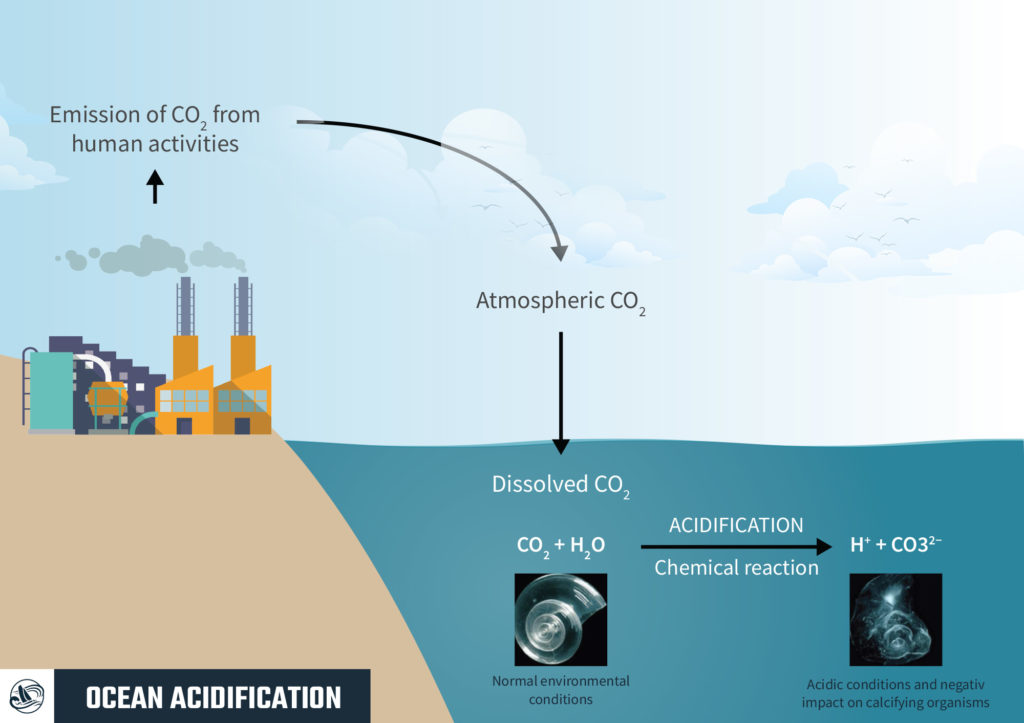
Iodysséus - What trends have you seen over the past decades? Can you already observe the effect of climate change ?
Peter Landschützer – Nowadays we are aware of the negative effects of rising CO2 levels in the ocean. And the bad news revealed by my research over the past 35 years is that the ocean is accumulating more and more CO2. A lot of other research has shown the same results: the CO2 content in the ocean is increasing, which raises the acidity as well. This was an expected phenomenon resulting from the increasing concentration of atmospheric CO2.
Iodysséus - Last spring, Iodysséus collected data in the Bay of Biscay and the Celtic Sea. Do you use data from other parts of the world ?
Peter Landschützer – I work with data collected from all over the world by all kinds of vessels (cargo ships, research vessels, and more). Most of those measures come from the northern hemisphere because this is where most trade routes are found. The useful thing with Iodysséus’ data is that the navigation zones are on biological phenomena, corresponding to the zones where the CO2varies widely. In order to study these phenomena, it is extremely important to perform measurements several times a year and on a fine grid.

Maps of Iodysséus’ 2019 expeditions
Iodysséus - Why is it interesting to study the ocean-atmosphere interface ?
Peter Landschützer – My research contributes to the improvement of climate models. The measures collected allow us to test previous prediction models. It is important to verify models by testing if past predictions were accurate.
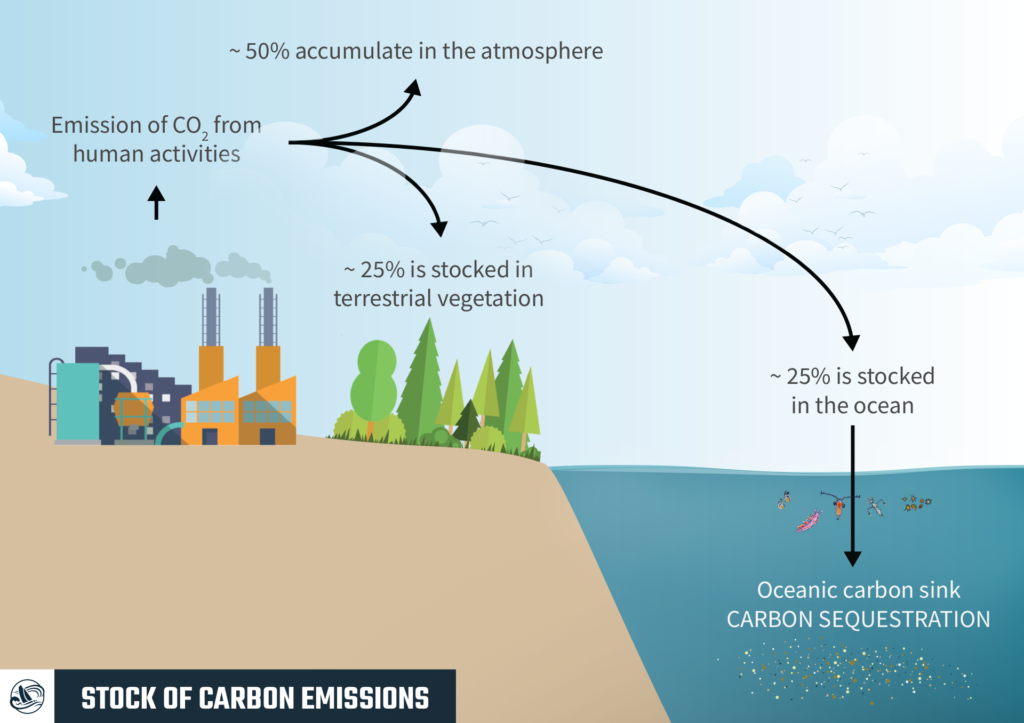
These data sets also help to establish additional predictions and projections for the future. Last, but not least, another point of interest is to calculate the rate of ocean acidification. This rate can be calculated as an average of global observations, or we can focus on smaller zones (highly-vulnerable zones, for example). The measurements taken by Iodysséus in spring 2019 provide extra information to help restrict seasonal variability and the seasonal CO2 cycle. During the spring, the partial pressure of CO2 decreases during bloom phenomenon because planktonic microorganisms pump CO2 for their growth.
Scientific research has shown that the amplitude of the seasonal cycle has increased over the past 35 years. This phenomenon was predicted by past models, and we can now see that this is actually happening.
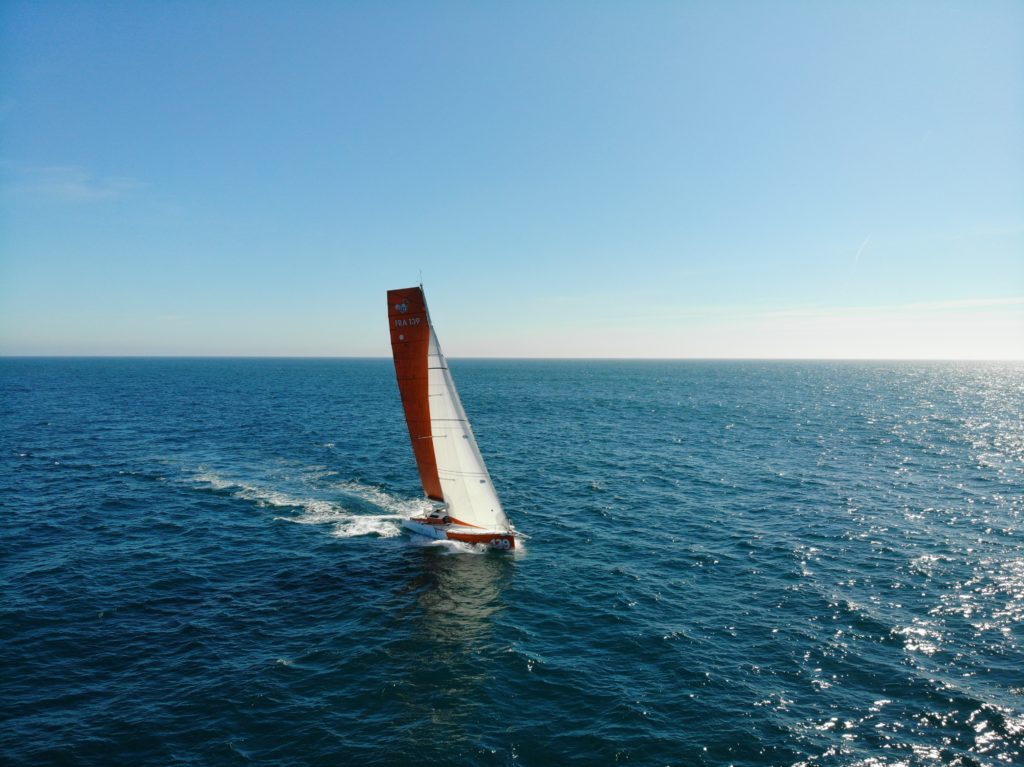
Iodysséus - What are the benefits of utilising this type of volunteer sailing yacht instead of large research vessels?
Peter Landschützer – I wouldn’t say “instead of”; we still need the research vessels. The correct phrase is “in addition to”, because the ocean is so huge. Taking measures is not so easy at open sea as it is on land; we need ships, we need boats. I like this comparison: in Germany,we have more than 40 million cars registered, but only about one million registered ships. The number of measurements taken is tiny in comparison to the size of the ocean. If all vessels were taking those measurements, we would certainly have much more accurate models.
